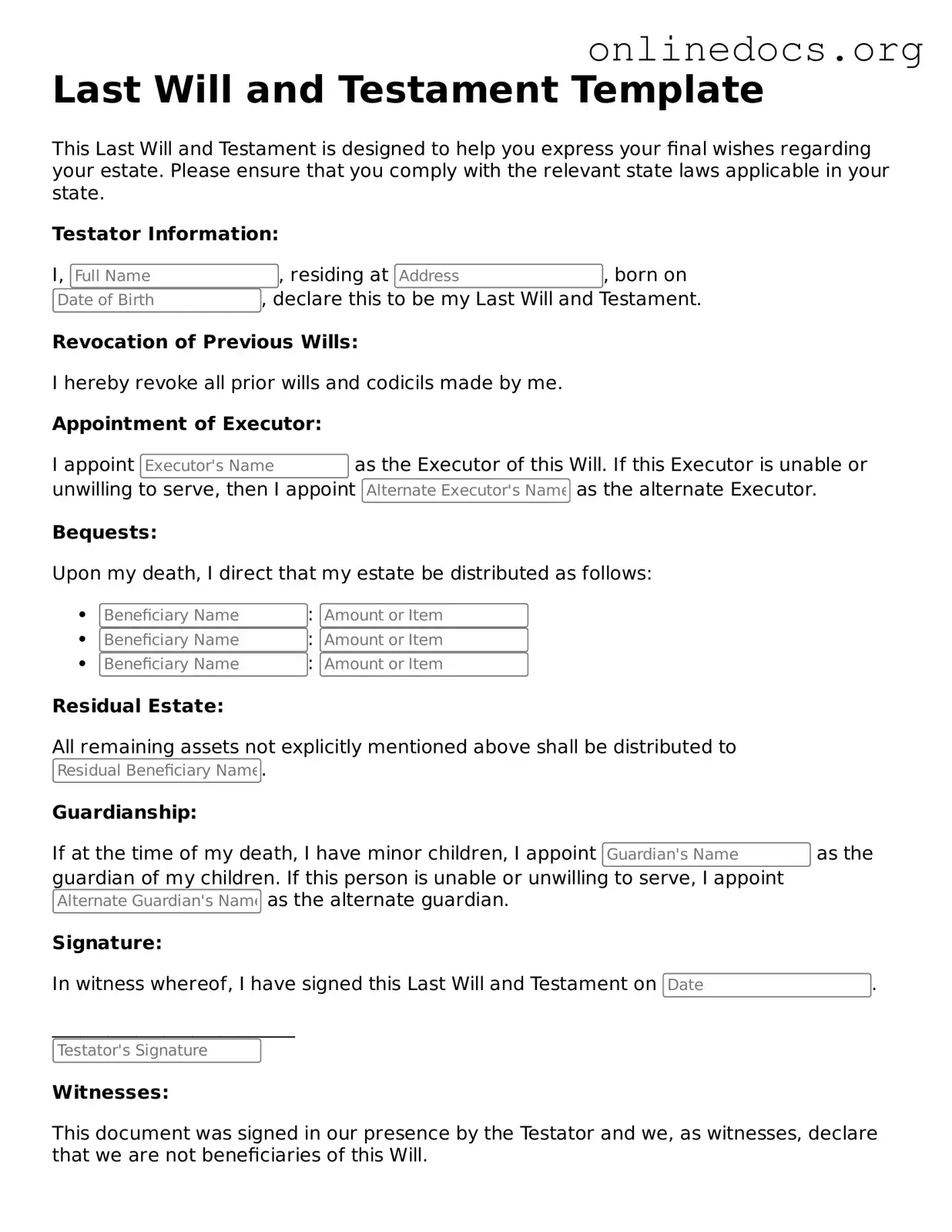The Last Will and Testament is a crucial legal document that outlines an individual's wishes regarding the distribution of their assets after death. It shares similarities with several other documents that serve to express a person's intentions about their property and affairs. Understanding these documents can help clarify the various ways individuals can prepare for the future.
A Living Will is one such document. Unlike a Last Will and Testament, which takes effect after death, a Living Will outlines a person's preferences for medical treatment while they are still alive but unable to communicate their wishes. This document often addresses end-of-life decisions, such as whether to receive life-sustaining treatment, making it an essential part of advance care planning.
Another important document is the Durable Power of Attorney. This legal instrument allows an individual to designate someone else to make financial or healthcare decisions on their behalf if they become incapacitated. While a Last Will and Testament dictates how assets are distributed after death, a Durable Power of Attorney ensures that someone can manage affairs during a person's lifetime, thus providing a comprehensive approach to managing both health and financial matters.
The Revocable Trust, often referred to as a living trust, is similar to a Last Will in that it dictates how assets will be managed and distributed. However, a key difference lies in its operation. A Revocable Trust can be altered or revoked during the grantor's lifetime, allowing for flexibility. Upon death, assets held in the trust can be distributed without going through probate, which can save time and legal fees.
Health Care Proxy is another related document. This allows an individual to appoint someone to make healthcare decisions on their behalf if they are unable to do so. While a Living Will specifies treatment preferences, a Health Care Proxy designates a trusted person to interpret those wishes and make decisions in real-time, ensuring that a person's healthcare aligns with their values and desires.
A Codicil is an amendment to an existing Last Will and Testament. It allows individuals to make changes or additions without having to create an entirely new will. This document must meet the same legal requirements as a will, ensuring that any modifications are valid and enforceable. Codicils can be particularly useful for those who experience life changes, such as marriage, divorce, or the birth of a child.
Another document to consider is the Letter of Intent. While not a legally binding document, it serves as a guide for executors and beneficiaries regarding the deceased's wishes. It can provide context for decisions about asset distribution and may include personal messages or instructions that can help clarify intentions, making it a valuable companion to a Last Will and Testament.
When considering important legal documents, it's advisable to understand the critical nature of a Durable Power of Attorney form. This form allows you to name an agent who can make significant decisions on your behalf, enhancing your ability to manage affairs even when you are unable to do so.
Beneficiary Designations are also similar in purpose. Many financial accounts, such as retirement plans and life insurance policies, allow individuals to name beneficiaries directly. These designations dictate how assets will be distributed upon death, often bypassing the probate process. This direct transfer of assets can simplify the distribution process and ensure that specific individuals receive designated benefits.
Joint Tenancy with Right of Survivorship is another method for transferring property. In this arrangement, two or more people own property together, and upon the death of one owner, the surviving owner(s) automatically inherit the deceased's share. This arrangement can effectively avoid probate and ensures that property passes directly to the surviving co-owner(s), aligning with the intent of a Last Will and Testament.
Lastly, a Declaration of Trust is a document that outlines how a trust is to be managed and the responsibilities of the trustee. This document can work alongside a Last Will and Testament, particularly when a trust is established to manage assets for beneficiaries. It provides detailed instructions on how the trust should operate, ensuring that the grantor's wishes are honored throughout the management of the trust.
